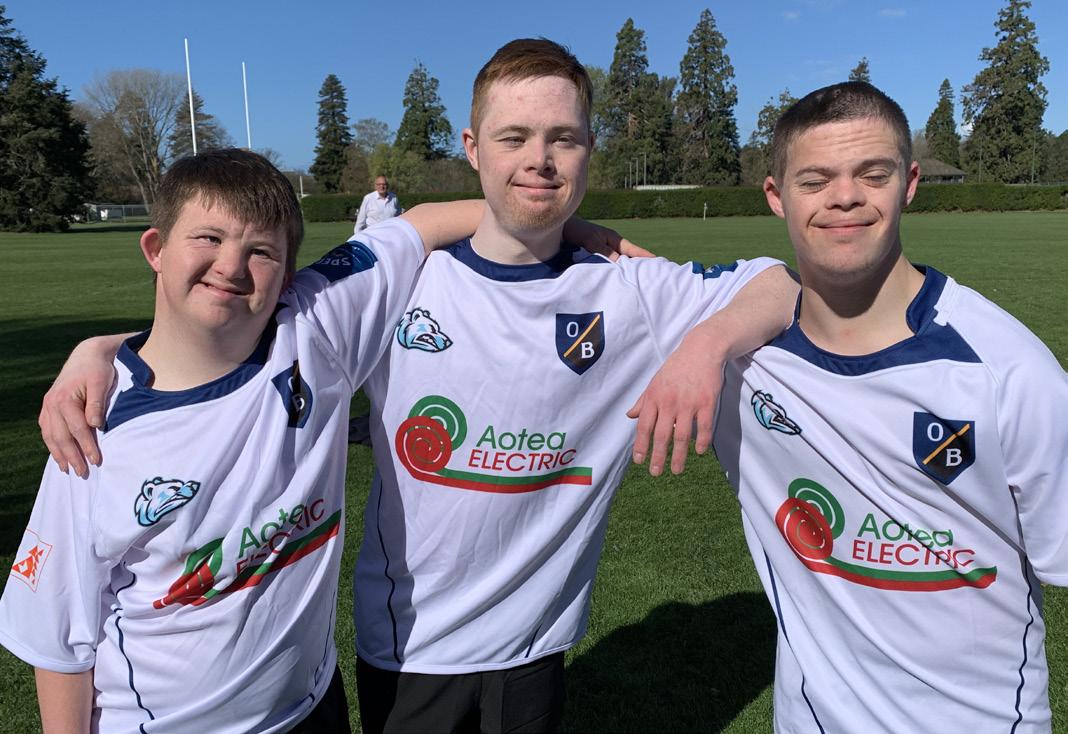
4 minute read
HOW SPEC-TACULAR
Did you know a research unit exists to study visual development in children with Down syndrome?
Since 1992 a special research team at Cardiff University has been working with 100 volunteer families to create the Down syndrome Vision Research Unit. These are some of their key findings: Babies with Down syndrome have vision like other babies. Children with Down syndrome are not born with abnormal eyes. The refractive errors (long and short sight) are exactly the same among infants with Down syndrome as among typical children. But, whereas ordinary children grow out of any errors very quickly in the first two to three years of life (a process known as emmetropisation), children with Down syndrome do not.
Children with Down syndrome tend to keep their infant defects instead of outgrowing them, or even to become more long or short sighted as they grow. Children with Down syndrome are much more likely to need glasses than other children. Children and adults with Down syndrome are much more likely to have eye defects than members of the general population. The defects include the long or short sight that many of us experience and for which we wear spectacles. But whereas only about 5-8% of ordinary children of primary school age need spectacles, approximately 60% of children with Down syndrome need them. Other defects are more common too, such as squint (eye-turn), poor focusing and reduced detail vision.
During close-up work children with Down syndrome usually focus past the right point unless they wear bifocals. • Many children with Down syndrome do not focus accurately on objects near to them. This means that near tasks, including books and pictures in school, are out of focus and blurred. • This poor focusing seems to be present even at the earliest age at which the unit sees the children, around 3 months of age. • They find that over 70% of the children focus poorly. • Focusing improves dramatically with bifocal spectacles. • Even with glasses children with Down syndrome do not see as much detail as other children. • Children with Down syndrome do not reach the same level of detail vision
(visual acuity) as do ordinary children of the same age. The difference is two or three lines on a conventional sight chart, whether measured by children reading the chart or by brain wave activity. This means that school reading materials don’t look the same to a child with Down syndrome as to the rest of the class. Enlarging the material may help, but it will still not look normal to the child.
Getting used to glasses
Getting your pre-schooler's eyes tested is hard enough. But when you do go home with a small pair of glasses, how do you get your child used to wearing them? Here are some suggestions you may find useful.
There are two aims when getting your preschooler used to glasses. • I now wear glasses (for however long) • Mum or Dad takes my glasses off. If I take them off, they will ALWAYS go back on.
First few days
• Have some treats or rewards ready that your child particularly enjoys and does not get often. • Put her glasses on, then take them straight off again. Don’t wait for her to get worried about the change in her vision. • Do this five or six times a day, for a
Wealth of information at your disposal
The NZDSA team has been working hard over the past few months to dig into 40 years of history and experience from our families to share our learnings.
We have delved into our archives and old editions of CHAT 21 to find historical information and brochures that are still just as relevant as when they were written five or 20 years ago.
The NZDSA is now in the process of updating, editing and redesigning these resources for our members in 2020.
The resources cover a wide variety of issues,
First week (or so)
• Put the glasses on and leave them on for a few seconds only. • While doing this be happy and full of praise. Raise your hands in the air, sing, dance etc! • Gradually increase the amount of time the glasses stay on - in increments of ten seconds only in the beginning. • Initially, you do not want your child to touch the glasses while they are wearing them so you will need to be almost holding their hands down while helping them to do something they really enjoy. • Once you can leave her arms free for a few seconds, let her play but as soon as you think she is going to pull off her glasses, either hold her hands or you take the glasses off.
Next few weeks
• Once your child is wearing the glasses for longer periods there will still be times when she will pull them off herself.
You need to ensure that you put them back on straight away with a specific phrase - e.g. “glasses stay on”. • You want to ensure a situation where your child learns that glasses do come off at times, but will only stay off if it is
Mum of Dad who takes them off. like glasses, coeliac, living independently, ante-natal testing, visiting the doctor, behavioural issues, nutrition, mental health and many other subjects that are relevant to our families. In the coming weeks, we will start uploading these resources onto or upgraded website www.nzdsa.org.nz , so please make sure you are registered for a free NZDSA membership so you can download these resources, along with any CHAT 21 copies, and get access to all the other information on our website. We will continue to expand and build this invaluable resource as we gather more information from around New Zealand and around the world.









